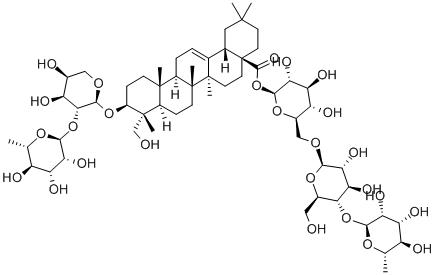-
Categories
-
Pharmaceutical Intermediates
-
Active Pharmaceutical Ingredients
-
Food Additives
- Industrial Coatings
- Agrochemicals
- Dyes and Pigments
- Surfactant
- Flavors and Fragrances
- Chemical Reagents
- Catalyst and Auxiliary
- Natural Products
- Inorganic Chemistry
-
Organic Chemistry
-
Biochemical Engineering
- Analytical Chemistry
- Cosmetic Ingredient
-
Pharmaceutical Intermediates
Promotion
ECHEMI Mall
Wholesale
Weekly Price
Exhibition
News
-
Trade Service
Polyethylene (PE) is one of the five synthetic resins, which has the largest production capacity and the largest import volume Polyethylene is mainly divided into three categories: linear low-density polyethylene (LLDPE), low-density polyethylene (LDPE) and high-density polyethylene (HDPE) Polyethylene is widely used in food contact materials because of its superior properties With the development of trade and the difference of relevant laws and regulations at home and abroad, China's import and export enterprises have brought some problems How to solve these problems, it is a good choice for enterprises to find professional organizations and experts or to seek a platform to provide professional services As a one-stop service platform for testing, certification and calibration, testcom provides various resources for improving solutions in the field of certification Thousands of certification organizations provide online services, providing convenient and efficient services for the demanders To understand the safety and health standards of PE food contact materials in foreign countries, so as to help Chinese export enterprises improve the quality level of their products, and reduce the obstacles caused by different standards at home and abroad Food contact materials are regarded as indirect food additives by the U.S Food and Drug Administration (FDA) according to the food contact material notification procedures (FCN), food additives declaration to the Procedures, FAP) and regulatory threshold procedures (TOR) that are lower than a certain limit value and can be exempted from management Code offshore regulation (CFR) is a compilation of regulations of the federal government, which is divided into 50 volumes Volume 2L is related to food contact materials, among which section 177 1520 defines PE products as "made of basic polymers produced by catalytic polymerization of ethylene" See Table 1 for health requirements
As can be seen from table 1, the density range of PE plastics applicable to this regulation is specified in the regulations of the United States of America, and the subsequent treatment of food contact materials is in accordance with the three categories of products used for food contact, but not including wrapping or storing food during cooking, wrapping or storing food during cooking, and as the component of coating contacting food The maximum allowable content of n-hexane at the specified temperature is specified The extraction part and the percentage content of the most soluble part in xylene are two detection items EU regulations on PE food contact materials EU regulations on food contact materials mainly focus on EU regulations For food contact materials without EU regulations, the management mode of Member States' regulations, European Commission resolutions or industry associations is adopted EU regulations on food contact materials are divided into three levels: Framework regulations, special regulations and individual regulations The current framework regulations of European Union on food contact materials and products are (ecln01935 / 2004 and (EC) n02023 / 2006 The general requirements of all EU wide food contact materials and the relevant requirements of good manufacturing practices are described in detail The European Union does not make special provisions for PE food contact materials The specific requirements directly follow the general requirements of (EU) n010 / 2011 and subsequent updates for all plastic food contact materials including PE, adding or using metal components, nylon Kitchenware and other decomposable aromatic primary amines, and need to meet the requirements for polyolefins See Table 2 for details Japan's regulations on the supervision of PE food contact materials the food safety management of Japan is mainly based on the food hygiene law implemented in 1947 Article 16 of the law stipulates the general safety requirements for food contact materials, and Article 18 stipulates that the Ministry of health, labor and welfare shall formulate the specification standards and test method standards for food contact materials According to the requirements of the food hygiene law, the Japanese government promulgated the basic law of food safety in 2003, which designated the Ministry of health, labor and welfare to be responsible for the requirements of standard formulation, and the food safety committee to be responsible for the risk assessment of food related standard formulation In addition, according to the requirements of the food hygiene law of Japan, the Ministry of health, labor and welfare of Japan issued announcement No 370 in 1959, and then, after modification and adjustment, it issued amendment No 595 in Pingsheng 24 The hygiene requirements for PE materials are shown in Table 3 South Korea's regulations on PE food contact materials South Korea's regulations on food contact materials are basically based on the Japanese model, with the establishment of standards for the management of molded products, not the management of raw materials used, nor the acceptance of new material licensing applications The Korean food and Drug Administration (KFDA) revised the specifications and standards for food containers, appliances and packaging materials in April 2012, which stipulates the total content of heavy metals related to synthetic resin products, the lead content of coating used for food contact surface, the lead content and antimony content of metal used for food contact surface used for manufacturing or repairing food contact materials, and the non food contact surface used For other general requirements such as the migration of benzophenone in printing ink, the total content of lead, cadmium, mercury and hexavalent chromium and the consumption of potassium permanganate in plastic synthetic polymers should be within certain limits, and polyethylene is defined as polyethylene containing more than 50% in the raw polymer, and nonvolatile residues should meet different test conditions See Table 4 for requirements of different limits







